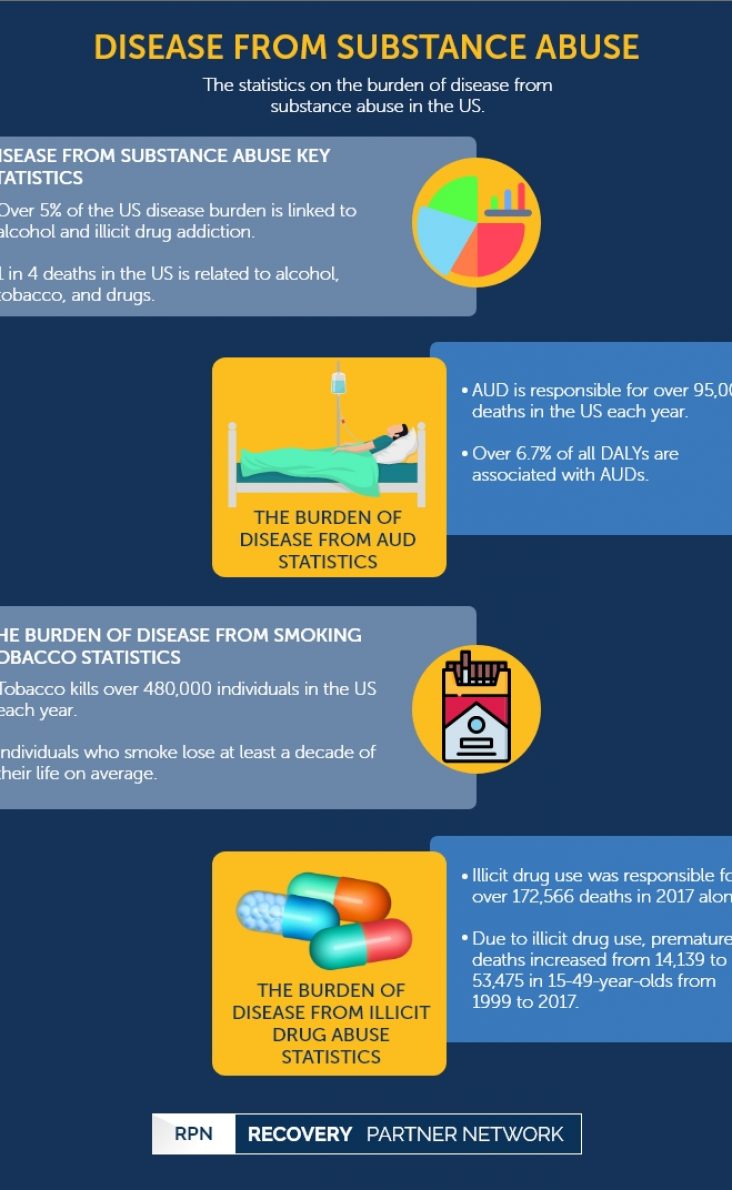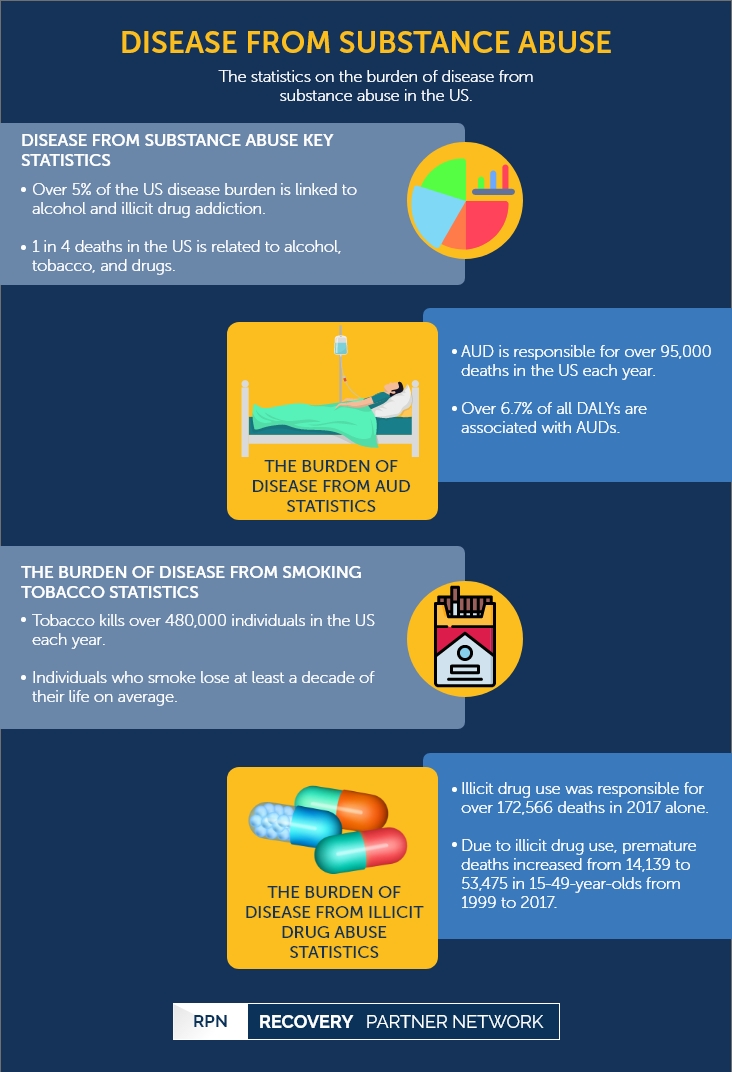The statistics on the burden of disease from substance abuse in the US.
Disease From Substance Abuse
Disease From Substance abuse | Table of Contents
The burden of disease from substance abuse refers to the severity of substance use disorders and their impact on a specific population. It can be measured through indicators such as Quality-Adjusted Life-Years (QALY) and Disability-Adjusted Life-Years (DALY) as well as by taking into account the death and morbidity rates and financial costs of SUDs. Since substance use disorders are one of the major contributors to the global disease burden, federal governments and institutions across the world take considerable efforts to measure their disease burden to compare them between different regions. This helps governments predict future medical needs, plan preventive actions, and assess healthcare systems’ performance.
Key Statistics
- Substance abuse is the leading cause of preventable deaths, illnesses, and disabilities in the US.
- Disease burden from substance use disorders is comparatively higher in the US than in other countries.
- More than 5 percent of the US disease burden is attributable to alcohol and illicit drug addiction.
- Deaths-related to alcohol, tobacco, and drugs has steadily increased from 638,855 in 1990 to 707,881 in 2017.
- One in four deaths in the US is related to alcohol, tobacco, and drugs.
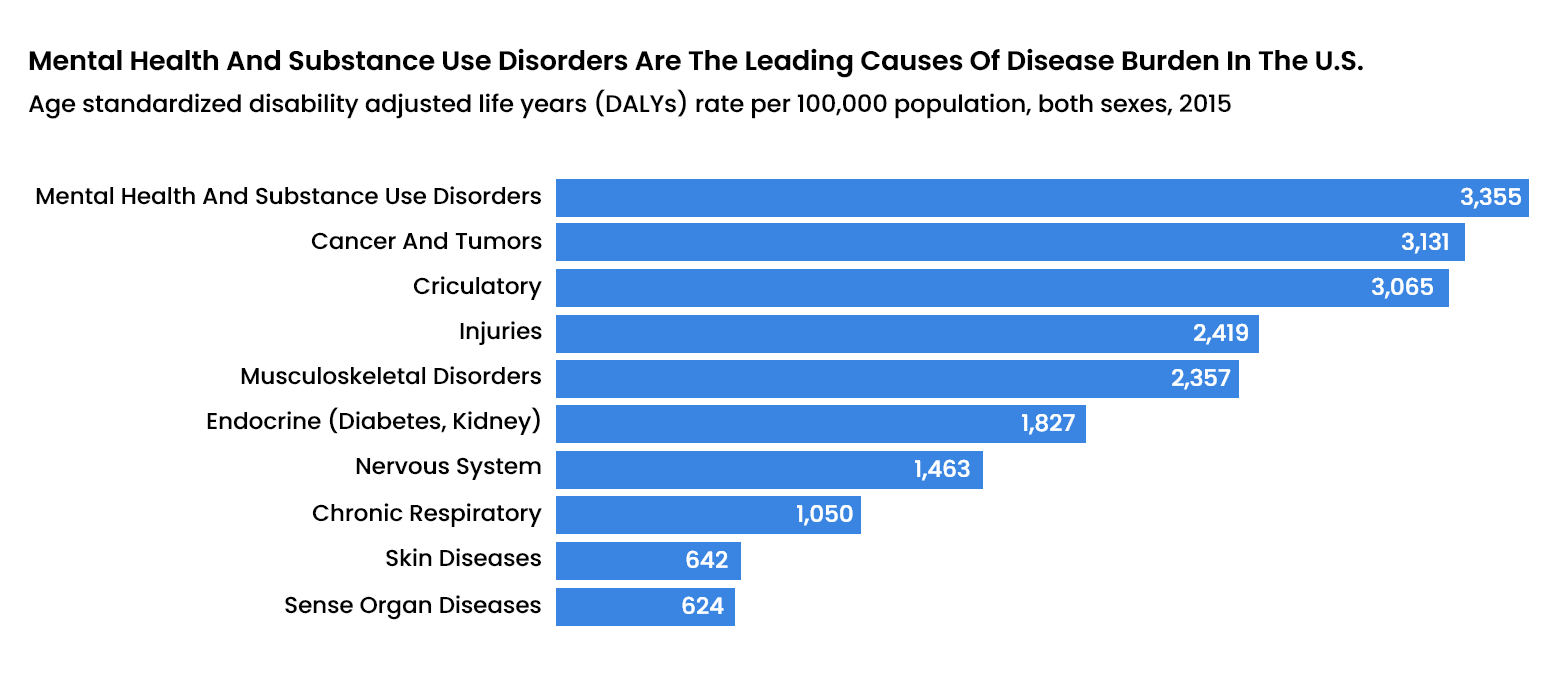
- In 2016, alcohol and drug use accounted for more than 5 percent of all risk-attributable DALYs.
- For every 100,000 individuals in the US, an average of 1,178 healthy years is lost to substance use disorders.
- The total number of healthy years lost due to substance abuse has steadily increased from 1.5 million in 1990 to 5.5 million in 2017.
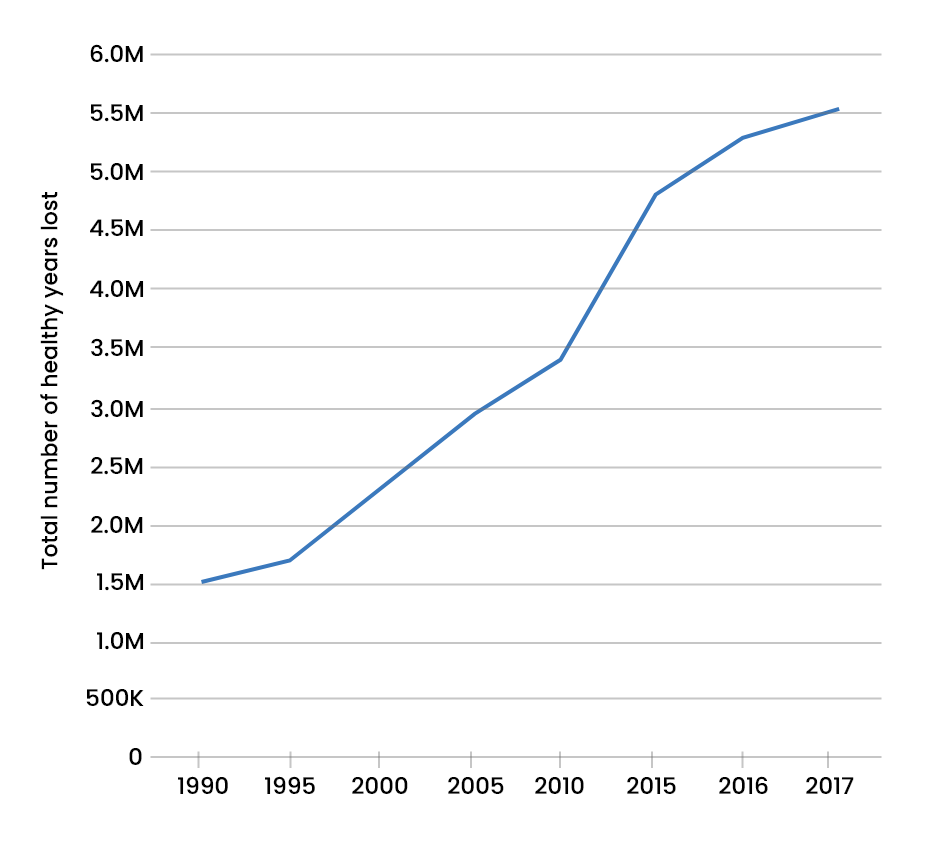
- According to the National Institute on Drug Abuse (NIDA), substance use disorders cost the US economy more than $740 billion each year.
- The total economic cost of substance abuse increased gradually from $428.1 billion in 1995 to $578 billion in 2016.
- Substance use disorders cost the US economy more than $874 billion each year in societal harm through premature deaths, disabilities, and injuries.
The Burden of Disease From Alcohol Use Disorder
Excessive use of alcohol may result in various diseases, injuries, disabilities, and even deaths. It may also impose huge costs on societies in terms of healthcare, incarceration, and loss of productivity.
- Alcohol use disorder is responsible for over 95,000 deaths in the US each year.
- According to the Centers for Disease Control and Prevention (CDC), alcohol-related deaths increased from 7.1 per 100,000 population in 1999 to 8.5 per 100,000 population in 2014.
- A 2018 study of drinkers found out that liver damage is one of the leading causes of death among regular drinkers. Deaths from liver-related illnesses nearly tripled from 1999 to 2016.
- According to the CDC, deaths caused by alcoholic-liver diseases increased from 14,695 to 18,164 from 2006 to 2015.
- Over 6.7 percent of all DALYs are associated with alcohol use disorders.
- From 2011 to 2015, about 2.7 million years of potential life were lost due to excessive consumption of alcohol.
- In 2005, men accounted for about 68 percent of DALYs associated with alcohol use disorders, while women accounted for about 74 percent.
- The total economic cost of excessive alcohol consumption was around $223.5 billion in 2006.
- The economic burden of alcohol abuse increased from $184.6 billion in 1998 to $223.5 billion in 2006.
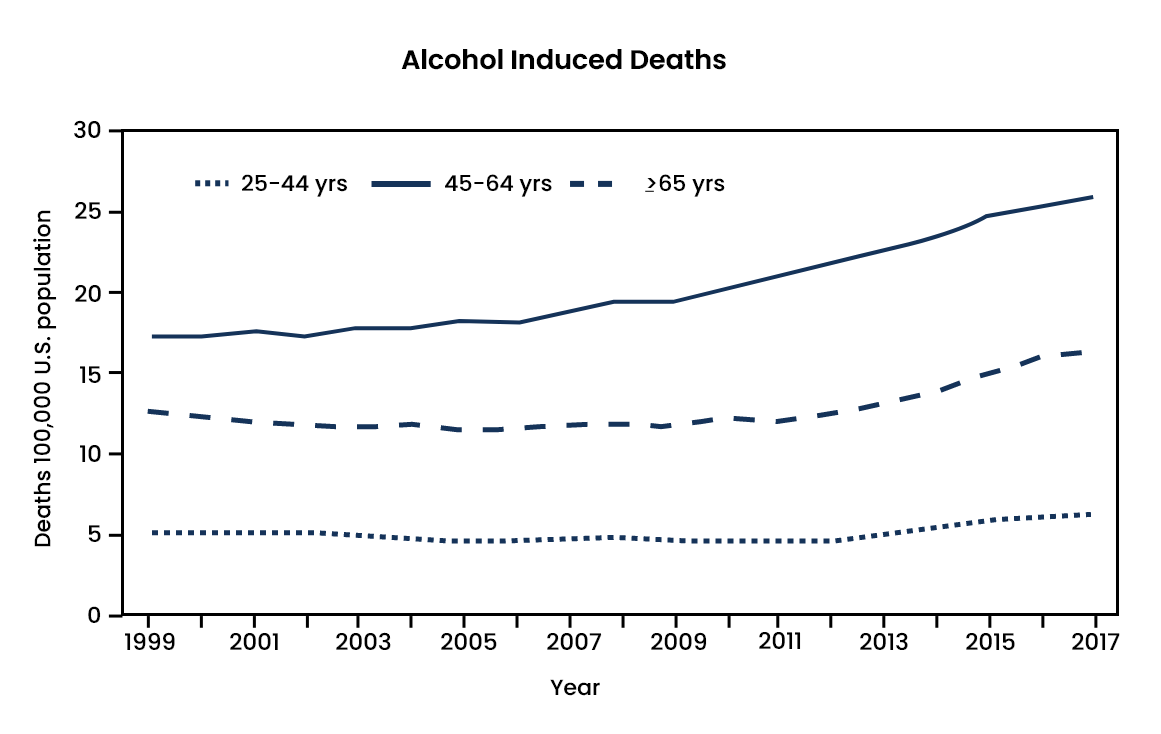
The Burden of Disease From Smoking Tobacco
Tobacco use is one of the leading causes of preventable diseases and deaths in the US. It also costs the US economy millions of dollars in loss of productivity, incarceration, and healthcare.
- According to the CDC, tobacco kills more than 480,000 individuals in the US each year.
- Deaths related to tobacco smoking were the highest among 70-year-olds and above and lowest among 15-49-year-olds between 1990 and 2017. However, the overall death rate from smoking has considerably reduced from 1990 to 2017.
- Heart diseases are the leading cause of death among smokers, followed by lung cancers and emphysema. Approximately one out of every four deaths from cardiovascular disease (CVD) is caused by smoking.
- Nearly 20 percent of all CVD deaths and 80-90 percent of all lung cancer deaths are related to cigarette smoking.
- Individuals who smoke lose at least a decade of their life on average.
- Tobacco smoking, including exposure to secondhand smoke, was responsible for over 5.1 million years of potential life lost between 2000 to 2004.
- From 2000 to 2004, smoking was responsible for over 3.1 million years of potential life lost in men and 2 million years of potential life lost in women.
- According to recent health and medical spending surveys, about 8.7 percent of all healthcare spending is allocated to treat illnesses caused by regular smoking.
- The total economic cost of tobacco smoking was about $326 billion in 2014.
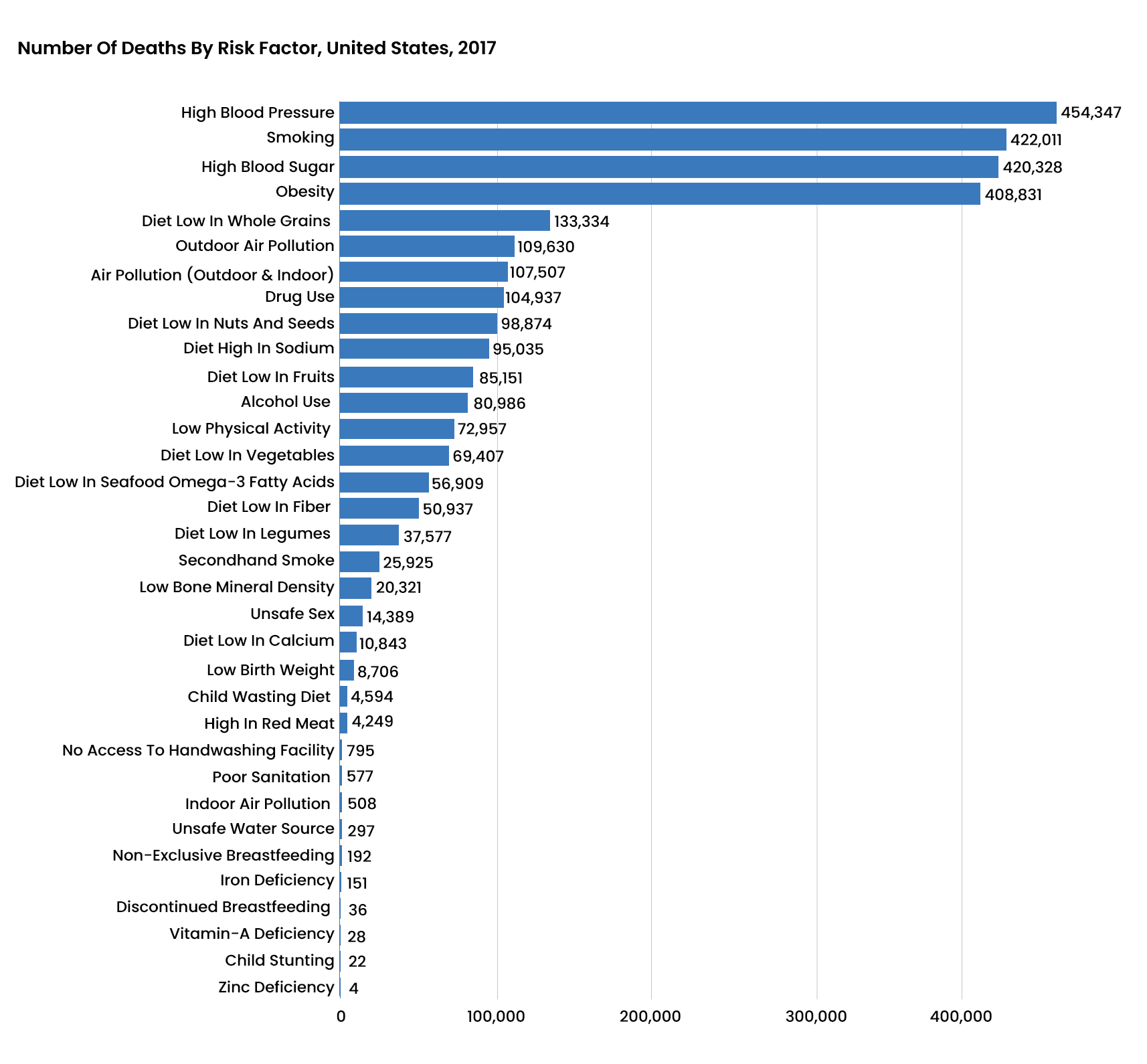
The Burden of Disease From Illicit Drug Abuse
The abuse of illicit drugs has, directly and indirectly, contributed to the US disease burden. The US was one of the many countries to have a notably high disease and illness burden due to illicit drug abuse in 2010. The leading cause of death among illicit drug users is overdose, HIV, suicide, and trauma.
- Illicit drug use was responsible for over 172,566 deaths in 2017 alone.
- Over 67,629 Americans died from illicit drug overdoses in 2017.
- Premature deaths due to illicit drug use increased from 14,139 to 53,475 in 15-49-year-olds, 6,917 to 39,000 in 50-69-year-olds, and 3,460 to 12,460 in 70-year-olds and above from 1999 to 2017.
- The years of potential life lost due to illicit drug use increased by 712,000 among non-Hispanic whites from 1990 to 2015.
- About 76 percent of the years of potential life lost due to illicit drug use between 1990 to 2015 occurred in 22-39-year-olds.
- Illicit drug abuse cost the US economy $193 billion in 2007. This included $11 billion in healthcare costs and $61 billion in criminal justice costs.
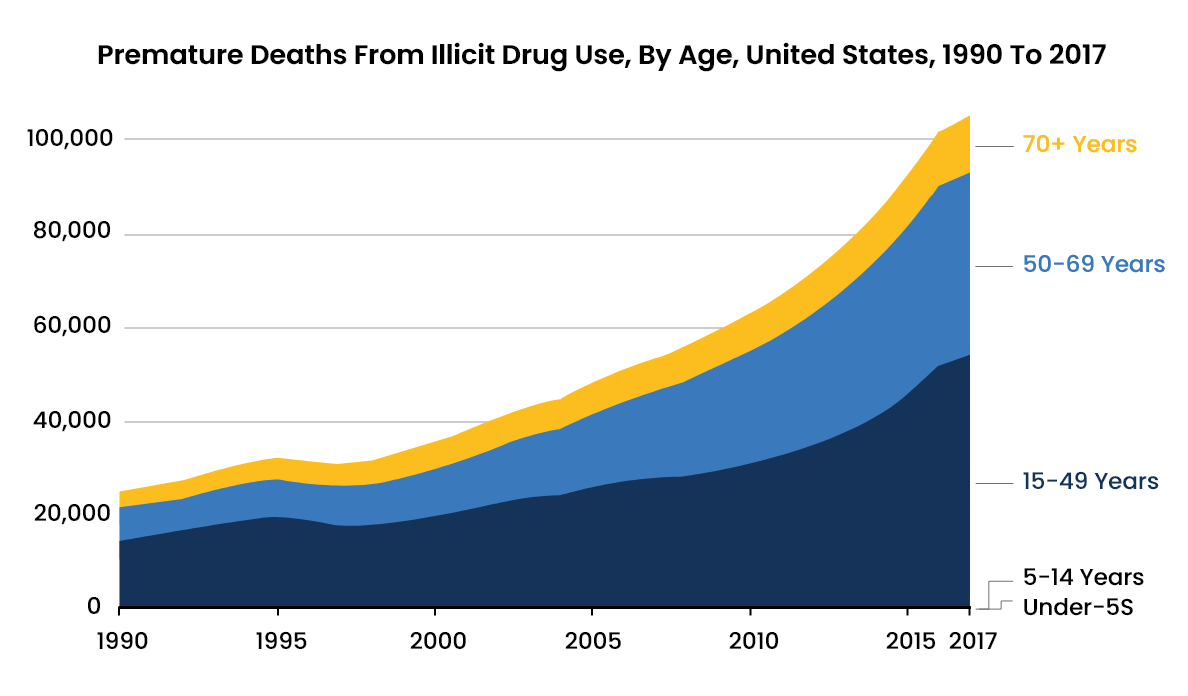
Recovery Partner Network
We aim to educate and empower. If you feel our library of resources does not cover your specific need, reach out to us, and we would be happy to help.
STATISTICS
© Copyright 2026

